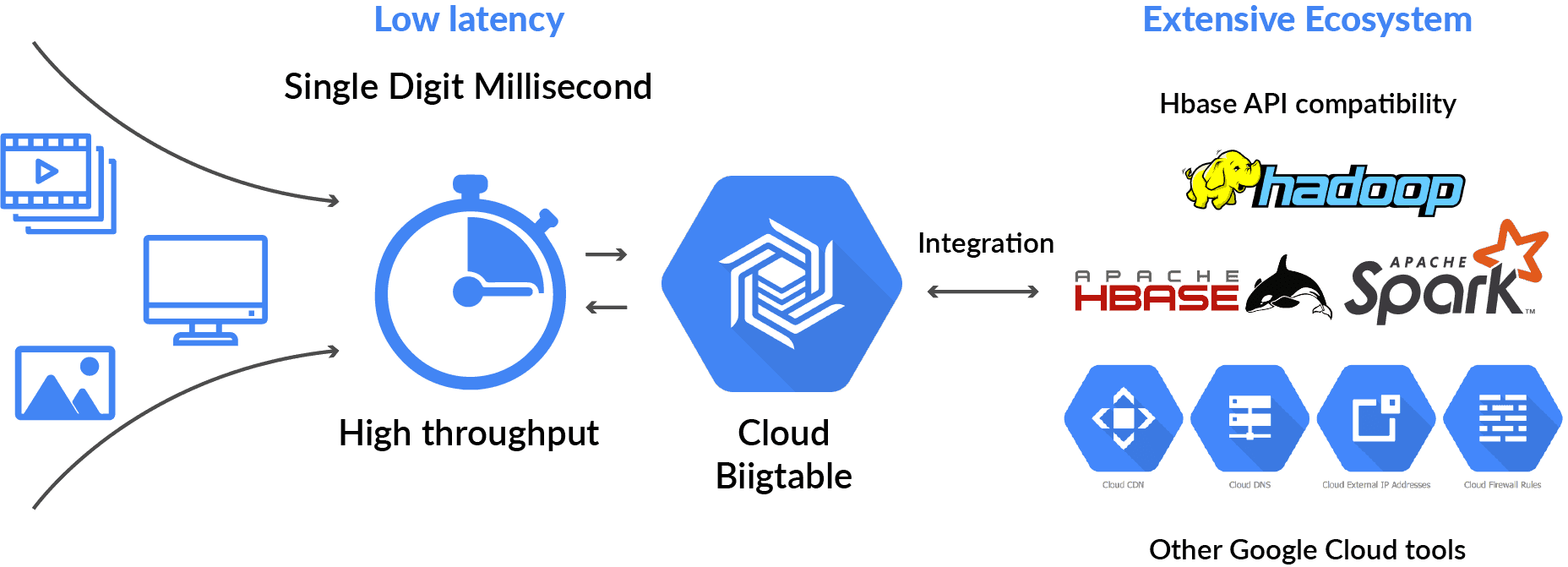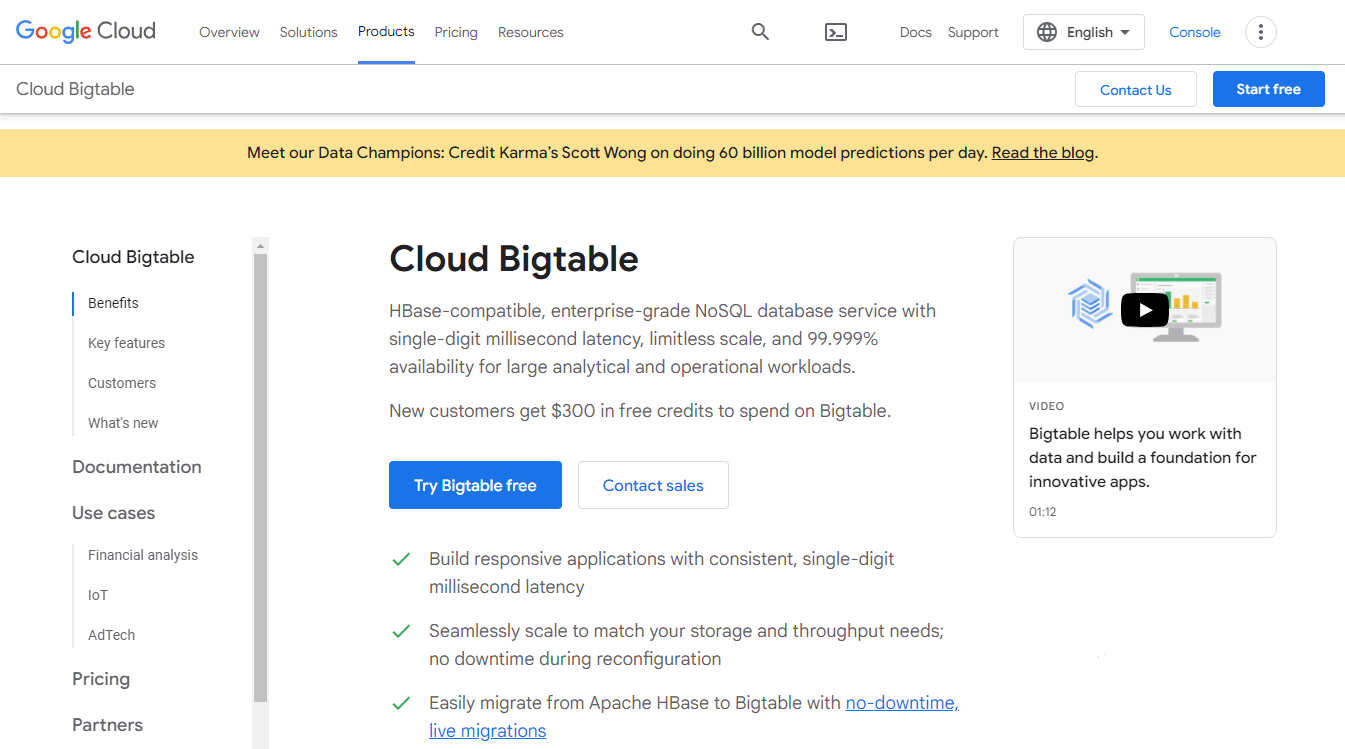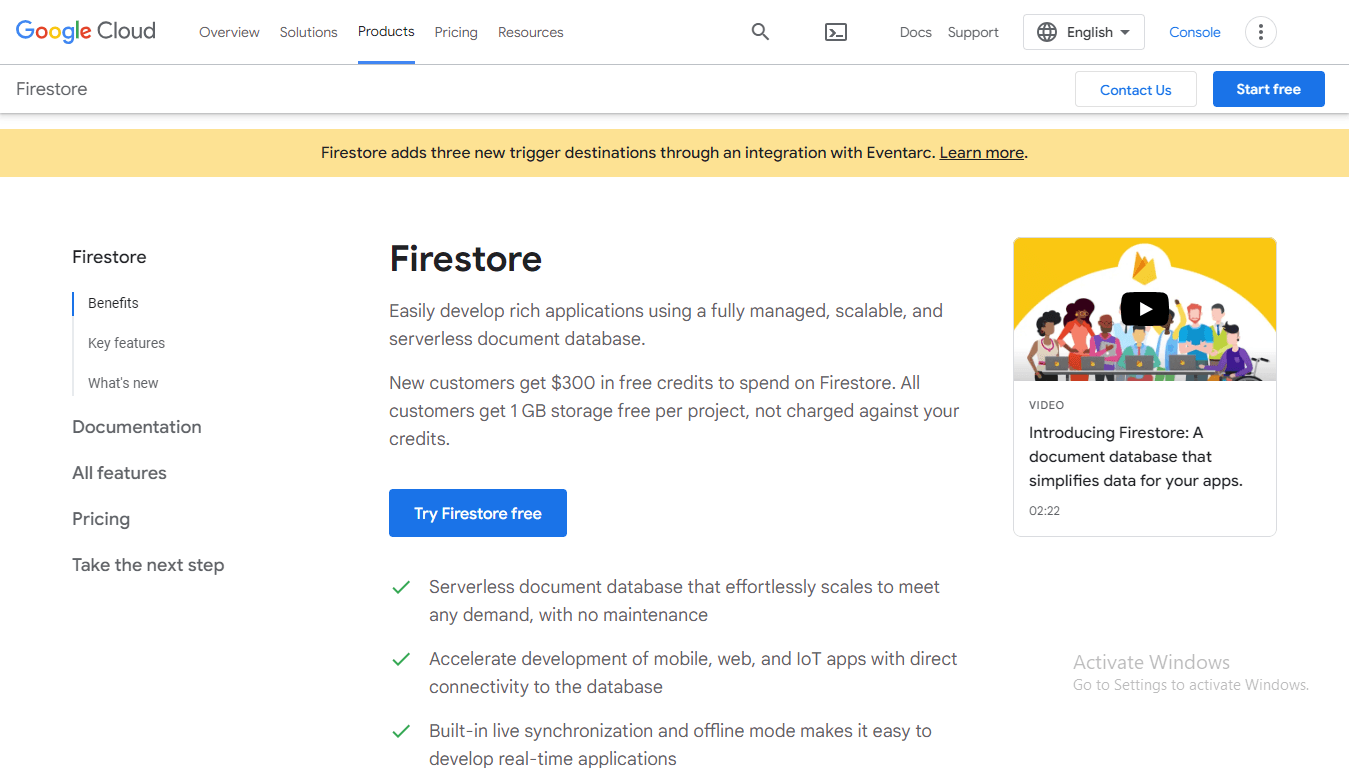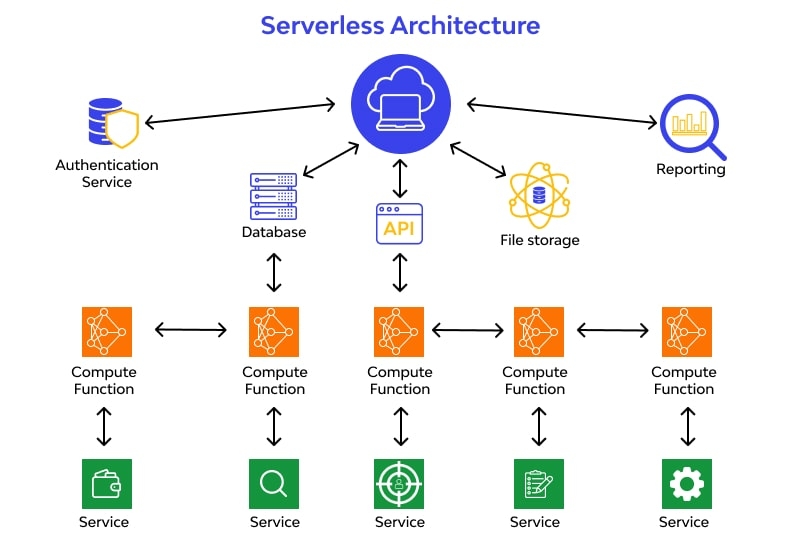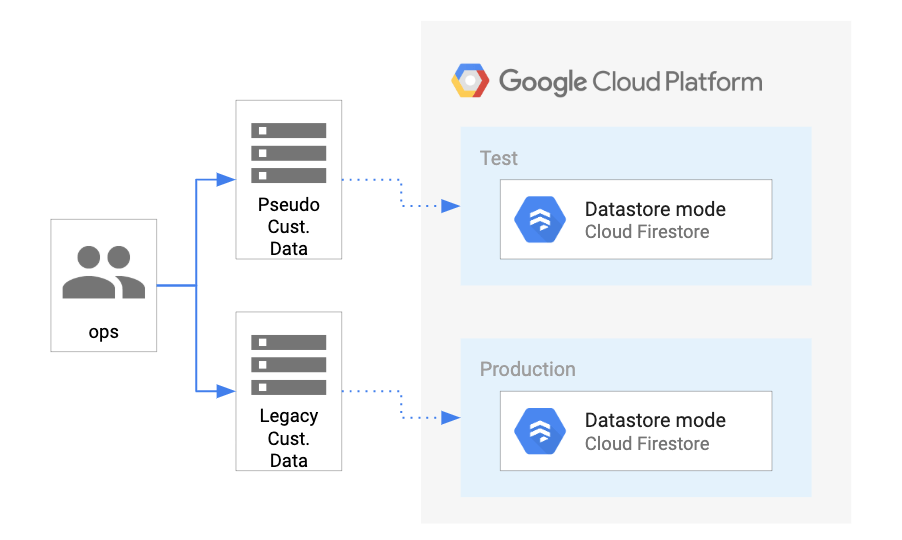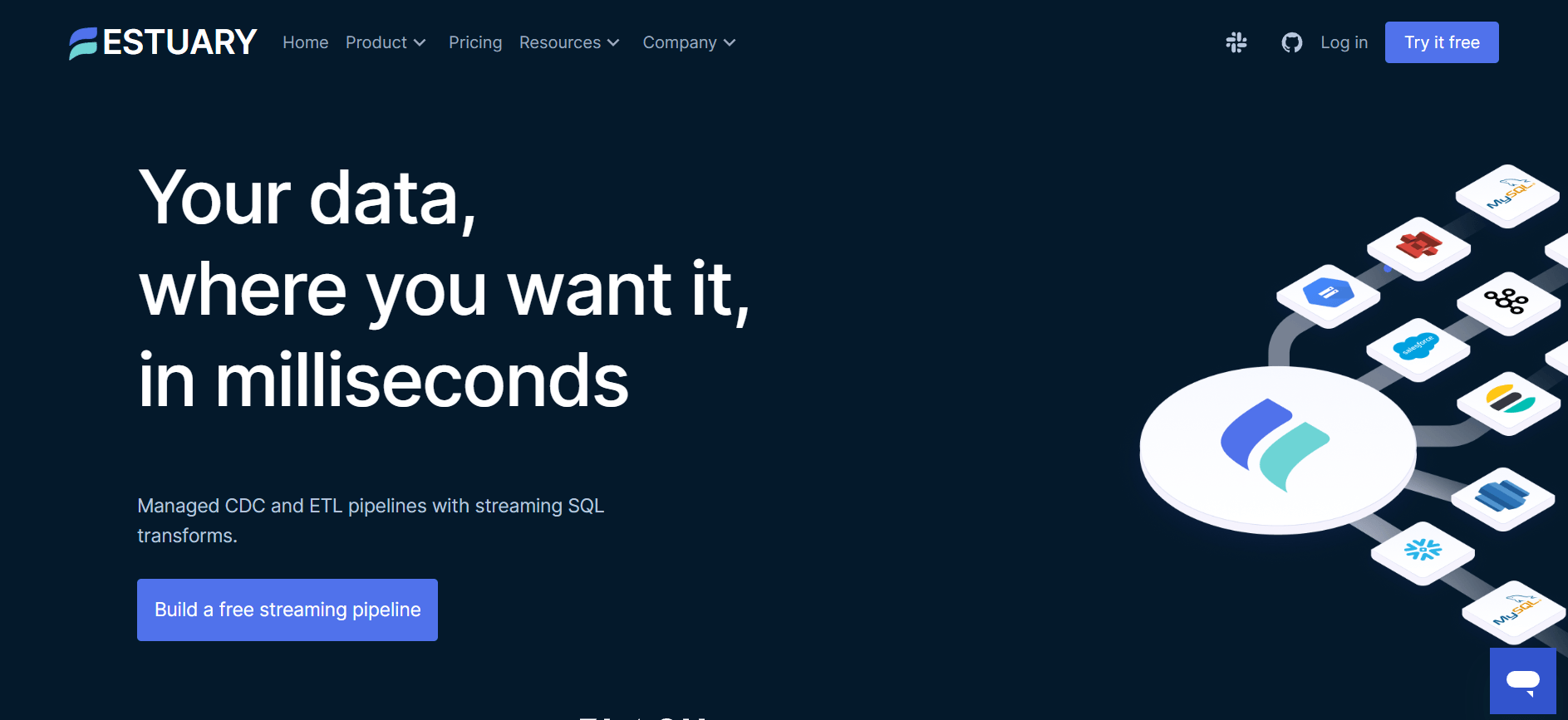
When it comes to exploring Google Cloud's database services, it's common to feel a bit torn between a few options. You have Bigtable, Firestore, Cloud SQL, and even the good old traditional relational database. But there's one particular comparison that really catches the eye because of their unique features and different applications: Bigtable vs Firestore.
Both Firestore and Bigtable are major players in the NoSQL market which is projected to reach $22 billion by 2026. In this exciting space, Firestore is a part of the new generation of NoSQL databases and it's highly praised for its scalability and user-friendly, serverless design. On the other hand, we have Bigtable, another NoSQL database that excels at handling huge analytical and operational workloads.
Deciding between Google Cloud Bigtable vs Google Cloud Firestore often boils down to understanding how well their capabilities dovetail with your project specifics and budget constraints.
Join us as we take a closer look at both databases and discuss their features and strengths. We'll break it all down so you can confidently choose the one that perfectly aligns with your needs.
Mastering Bigtable: An In-Depth Overview
Google Cloud Bigtable is a managed NoSQL database solution designed to cater to both analytics and operational workloads. Bigtable excels when it comes to handling high throughputs and scaling up to meet demanding requirements, especially when dealing with data values that are under 10MB.
Its design is optimized for robustness and speed which makes Bigtable a strong fit for various applications. From batch MapReduce and stream processing to machine learning, Bigtable accommodates all with ease and ensures effective and reliable data management.
Key Features Of Bigtable
Consider these features and see if they fit your database requirements.
Scalability
Google Cloud Bigtable is renowned for its scalability which is linearly proportional to the number of machines in your cluster. Be it sudden spikes in data demand or steady growth, Bigtable ensures you get optimal performance without concerns about resource limitations.
Automation
Bigtable automatically manages upgrades and restarts to ensure data durability through replication. On the other hand, you would need to handle replicas and regions with HBase. With Bigtable, you simply design table schemas and add a second cluster to instances. The system configures replication automatically.
Low Latency
Google Cloud Bigtable enables low latency data access, making it ideal for applications that require quick response times and high-performance capabilities. This allows applications to swiftly access and manipulate data, ensuring a seamless and responsive user experience. As such, Bigtable is well-suited for use cases that demand rapid data access and low response times, such as real-time analytics and time-sensitive applications.
Dynamic Cluster Resizing
With dynamic cluster resizing, Bigtable adjusts your cluster size as needed. This feature allows you to maintain optimal performance, with the system rebalancing load across nodes within minutes. Resizing an HBase cluster is a complex, downtime-requiring operation.
Understanding Firestore: Functions & Features
Google Cloud Firestore is a flexible NoSQL database that stores data in a document model and organizes them into collections. The way it is structured makes it perfect for handling collections of small documents.
Each document is made up of an array of key-value pairs which gives you the flexibility you need to optimally manage your data. Firestore's ability to contain subcollections and nested objects within documents provides an extra layer of data organization and flexibility.
It creates these documents and collections effortlessly. Firestore automatically generates a new document or collection when you assign data to one that does not exist. This feature helps in quick and seamless data storage operations.
Key Features Of Firestore
Consider these features to see how they compare to Bigtable and whether Firestore is a better fit for your needs.
Automatic Scaling
Regardless of the size of your database, Firestore maintains consistent query data performance and frees you from manual capacity planning.
Serverless Development
Firestore takes a serverless approach to development. Networking and authentication are handled using client-side SDKs, reducing the amount of coding required.
Backend Security Rules
Firestore’s robust backend security rules allow for complex validation of data to ensure data integrity and compliance.
Offline Support
With Firestore, you can access databases from user devices while offline. This feature is available across various platforms, including web browsers, iOS, and Android.
Datastore Mode
Firestore supports the Cloud Datastore API in "Datastore mode.” This way, the applications that currently use Google Cloud Datastore can switch to Firestore without any necessary code changes.
Bigtable vs Firestore: Comparative Analysis For Better Data Management
Google Cloud Bigtable and Firestore are 2 powerful yet distinct NoSQL databases and choosing the right one will have a big impact on your data management strategy. Let’s pit them against each other and see which database is better suited for different applications and workloads.
Data Modeling
Bigtable functions as a wide-column NoSQL database. Its data organization uses rows and columns specifically designed to manage vast quantities of data with superior read and write throughput. This makes Bigtable an ideal fit for large-scale, high-performance workloads.
On the other hand, Firestore operates as a NoSQL document database. This structure stores data in collections of documents, each document consisting of key-value pairs and potentially housing nested structures. With its flexible querying and indexing capabilities, Firestore can efficiently manage any complex data model and hierarchical data.
Scalability
Bigtable excels at massive scalability, effortlessly handling petabytes of data. It uses Google's distributed infrastructure and guarantees high throughput and low-latency data access. This makes it ideal for applications with extreme scalability demands.
Firestore is horizontally scalable and can automatically adjust to increasing workloads. It employs sophisticated load balancing and data partitioning techniques to distribute the workload evenly across its infrastructure, which makes it a powerful option for smaller scale applications. However, Firestore may present limitations when managing immense volumes of data.
Data Consistency
Bigtable, being a distributed system, employs eventual consistency. This means data changes might take a while to propagate across the system. It values high throughput and low latency more than immediate consistency. This means that Bigtable is a perfect fit for those use cases where real-time data access takes precedence over instant consistency.
On the other hand, Firestore ensures strong data consistency by default to reflect the most recent updates in data reads. It also offers eventual consistency for cases where immediate consistency isn't necessary. This gives developers the flexibility to choose the consistency level they need for different parts of their application.
Data Analytics
Bigtable handles substantial amounts of structured data and ensures efficient storage and retrieval of data. It is often employed alongside other data processing tools and frameworks like Apache Hadoop and Apache Spark for large-scale analytics and batch processing. This makes Bigtable an ideal choice for applications that require substantial data analytics capabilities.
Firestore, however, is designed with real-time applications in mind that offer real-time data synchronization across clients. Firebase, a comprehensive platform for building and scaling web and mobile applications, powers Firestore as one of its core services, making it an excellent fit for mobile and web applications that demand real-time updates.
Serverless Approach
Bigtable, while managed, requires more configuration and management. Since it provides you with more control and flexibility, you'll need to invest some time and effort into setting it up just right for your specific needs.
On the other hand, Firestore is a fully managed, serverless database that handles all the scaling automatically. You don't have to worry about adjusting resources or scaling up or down based on demand - Firestore does it for you. This is especially handy for applications that experience unpredictable traffic patterns.
Real-Time Updates & Offline Support
Bigtable does not have built-in live synchronization and offline mode. So, if you require real-time synchronization or the ability to work offline with your data, you need to implement custom solutions on top of Bigtable.
Firestore, in contrast, has built-in live synchronization and offline mode. These features make it easy to build real-time applications as changes in the database are instantly reflected in the app.
Query Capabilities
Bigtable is designed for wide-column storage and does not support complex transactions. So if you require operations that involve multiple changes to your data and need to ensure atomicity and consistency across those changes, you'll need to implement custom transactional logic.
Firestore's powerful query engine, on the other hand, allows you to run sophisticated ACID transactions against your document data. This gives you more flexibility in how you structure your data, making it easier to perform complex queries.
Integration With Other Services
Bigtable can be integrated with other Google Cloud services but it does not have the same level of integration as Firebase.
Firestore seamlessly integrates with both Firebase and Google Cloud services like Cloud Functions and BigQuery. This allows developers to easily connect various services and create comprehensive applications.
Security Measures
Bigtable offers robust security features that are more focused on enterprise-level needs. On the other hand, Firestore integrates with Firebase Authentication and Identity Platform which enables customizable identity-based security access controls. It also allows data validation via a configuration language to ensure your data is always protected.
Multi-Region Replication
Bigtable supports replication but it's more configurable and can be set up for either strong or eventual consistency.
Firestore offers automatic multi-region replication and strong consistency, providing a 99.999% availability guarantee. This means your data is safe and available even when disasters strike.
Bigtable Or Firestore? A Use-Case Approach To Finding the Perfect Fit
Each service comes with its unique set of features and limitations. While some databases are more suitable for certain scenarios, it ultimately boils down to carefully evaluating your specific requirements and choosing the one that aligns best with your unique needs.
Let's explore some situations where Bigtable and Firestore are at their best.
When To Opt For Google Cloud Bigtable?
Bigtable truly shines when you're dealing with massive datasets that need to be spread across multiple database nodes. Its power becomes evident when you have datasets that lend themselves well to parallel processing. With Bigtable's parallel architecture, you can process petabyte-scale data at lightning speed.
Here are some specific situations where Bigtable proves to be an excellent choice:
Managing Log data
Bigtable is perfect for handling large volumes of log data generated by various applications and systems. Whether you're dealing with application logs, server logs, or even network logs, Bigtable's distributed nature and efficient data retrieval capabilities make it an ideal choice for managing and analyzing log data efficiently.
Handling Sensor Data From IoT Applications
The Internet of Things (IoT) has opened up a world of possibilities, generating vast amounts of data from sensors embedded in various devices. Bigtable provides the necessary scalability and real-time data processing capabilities required to handle this sensor data effectively. Whether it's data from smart devices, environmental sensors, or industrial equipment, Bigtable can store and process it efficiently.
Storing Geographic Information
Geospatial data is another domain where Bigtable excels. Whether you're dealing with maps, satellite imagery, GPS coordinates, or other location-based data, Bigtable's distributed storage and indexing capabilities allow for efficient querying and analysis of geospatial information. This makes it a great choice for applications involving mapping, navigation, logistics, and geolocation services.
Powering Reporting Systems
When it comes to generating reports from vast amounts of data, Bigtable proves to be a robust solution. It can store and process the data required for generating reports and provides fast and accurate results. Whether you're generating real-time analytics reports or periodic business intelligence summaries, Bigtable's parallel processing capabilities enable efficient and timely reporting.
While Bigtable offers impressive capabilities, note that it may not be the best fit for every situation. Implementing and managing Bigtable can be complex and requires careful planning and expertise.
For smaller-scale datasets, simpler solutions may be more suitable and easier to handle. Assess your specific requirements and consider factors like data size, complexity, and resource availability before deciding on Bigtable or exploring alternative solutions.
When Is Firestore The Right Choice?
Firestore is a robust and versatile option if you are looking for real-time data synchronization and exceptional data handling capabilities.
Here are some scenarios where it is particularly useful:
Real-Time Updates
If your application requires real-time updates from the database, Firestore is an excellent choice. It enables seamless synchronization between clients and the server and allows you to receive instant updates as soon as the underlying data changes. This makes it ideal for collaborative applications, chat systems, real-time dashboards, and other scenarios where immediate data updates are crucial.
Managing Large Collections Of Small Documents
Firestore is designed to handle large collections of small-sized documents efficiently. It can effortlessly manage thousands or even millions of documents, making it a great choice for applications that involve storing and retrieving vast amounts of small-scale data. This includes scenarios like user profiles, chat messages, activity feeds, and IoT sensor readings.
Offline Data Storage & Synchronization
If your application needs to function offline or have reliable offline data storage, Firestore offers built-in offline capabilities. You can store data locally on the user's device and automatically synchronize it with the server once the internet connection is restored. This feature is valuable for mobile apps, field operations, and other situations where network connectivity may be intermittent.
Automatic Horizontal Scaling
Firestore can handle increasing workload and traffic without requiring manual intervention. As your application grows and the data load increases, Firestore dynamically scales to accommodate the demands, ensuring high performance and responsiveness. This scalability feature makes it an excellent choice for applications that anticipate rapid growth or unpredictable spikes in traffic.
On top of its impressive capabilities, Firestore brings advanced querying powers to the table, including sorting and transactions. This makes it well-suited for applications that demand complex data retrieval and manipulation operations.
Whether you're building analytics tools, content management systems, or other data-intensive applications, Firestore can handle hundreds of gigabytes to terabytes of mostly read-only data with efficiency and ease.
However, Firestore may not be the perfect fit for every scenario. If you're dealing with just a few gigabytes of data or your information doesn't change frequently, there might be other databases out there that offer more efficient solutions.
Additionally, if your project involves using multiple databases for individual projects instead of a single database instance, Firestore might not be the optimal choice for you. Take a close look at your specific requirements, including data size, update frequency, and architectural needs to make an informed decision that aligns perfectly with your goals.
Bigtable Pricing
Bigtable pricing depends on several factors like the type of instance, number of nodes, storage used, and network bandwidth consumed. Please note that specific prices can vary depending on the region. You can visit the Bigtable pricing page for more details.
Firestore Pricing
Firestore pricing is based on:
- Network bandwidth
- Storage your database uses
- Number of documents you read, write, and delete
- Number of index entries matched by aggregation queries
Firestore gives you a free daily quota so you can get started for free. Visit the Firestore pricing page for more details.
Transform Your Firestore Workflows: Embrace the Power of Estuary Flow
Estuary Flow is our DataOps platform that supercharges your Firestore experience. It has a range of powerful features that significantly enhance how you work with Firestore. You can streamline and optimize your data operations and make your Firestore workflows more productive and scalable than ever before.
Estuary Flow steps in to automate the entire data ingestion, transformation, and integration process, ensuring that your Firestore data stays fresh, reliable, and ready for analysis in various tabular analytical systems and data warehouses. Using Estuary Flow, you can effortlessly add schema to your Firestore data, making it seamlessly compatible with other storage systems for smooth and efficient analysis.
Flow automatically detects any issues that arise during the data export process and takes care of fixing them, ensuring that the data you extract from Firestore is of the highest quality and accuracy.
Estuary Flow makes your life easier by offering pre-built connectors and integrations for different data sources. With its help, you can effortlessly sync data between Firestore and other systems in real time. This means you can set up data pipelines and integrations with just a few clicks, saving you time and effort.
Conclusion
When it comes to Bigtable vs Firestore, both solutions stand their ground as leading choices for transactional systems. Deciding between Bigtable and Firestore isn't a matter of simply picking the 'better' one. Instead, it's about understanding your specific requirements, project scope, and budgetary limits, and aligning these with what each database brings to the table.
Estuary Flow goes the extra mile by providing value-adds that enhance the capabilities of Firestore. One such valuable feature is its real-time change data capture connector designed specifically for Firestore. This innovative solution amplifies the power of Firestore so you can efficiently meet your diverse project needs.
To learn more about how Estuary can boost your data management, sign up for free today or contact us now to start your journey toward effective and streamlined data management.

About the author
With over 15 years in data engineering, a seasoned expert in driving growth for early-stage data companies, focusing on strategies that attract customers and users. Extensive writing provides insights to help companies scale efficiently and effectively in an evolving data landscape.





